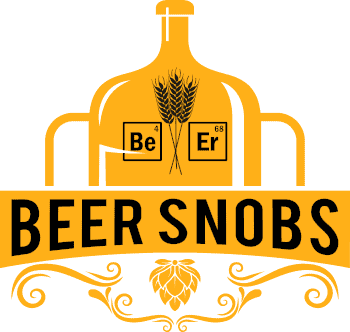If you buy something through a link in our posts, we may get a small share of the sale.
Most beer lovers and beginner home beer brewers will often have many questions about how beer is made. Of all these numerous questions, one of the most common questions has to be: how long does it take to make beer?
Contents
How Long Does It Take To Make Beer?
It takes a total of about 4 to 12 weeks to make beer. From this time, only about 6 to 10 hours are dedicated to actually making beer, while the rest of the time is needed for fermentation. Beer isn’t finished until the fermentation is done.
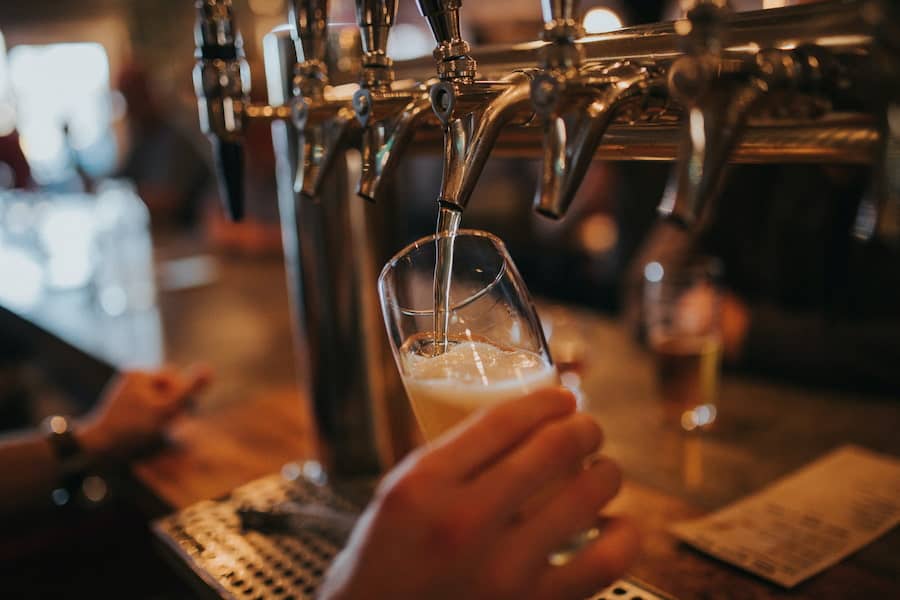
However, a number of different factors come into play when determining the specific time it takes to brew a type of beer. These factors include:
- The recipe you are using
- The brewing method
- The fermentation style
- The type of beer
- The type of yeast you use
- The temperature at which you ferment the beer
All of these factors contribute to the length of time it takes to make the beer. In turn, the length of time the beer takes to ferment and condition directly affects the flavor of the beer. Ultimately, making beer is a game of patience.
The longer you allow the beer to ferment and condition, the better the taste.
Brewing Time vs Waiting Time
The time you spend preparing the ingredients and brewing the beer is a lot shorter than the time you have to wait before you get to drink it. Preparing the ingredients should only take you a few hours, sometimes spread over 2 or 3 days.
Fermentation is where your patience is tested. The process of fermentation can take up to several weeks or even months. Most people allow their beer to ferment long enough to achieve a full and rich taste.
Keep in mind that yeast needs a lot of time to convert all the sugar into alcohol even after most of the technical part of the brewing is done. It is also advisable to be able to tell if the beer is fermenting.
How Is Beer Made?
There are a number of processes that beer has to undergo before it finally becomes ready to drink. This process is broadly divided into:
- The preparation phase
- The brewing phase
- The fermentation phase
After the fermentation phase is completed, your beer is set to be bottled and stored away.
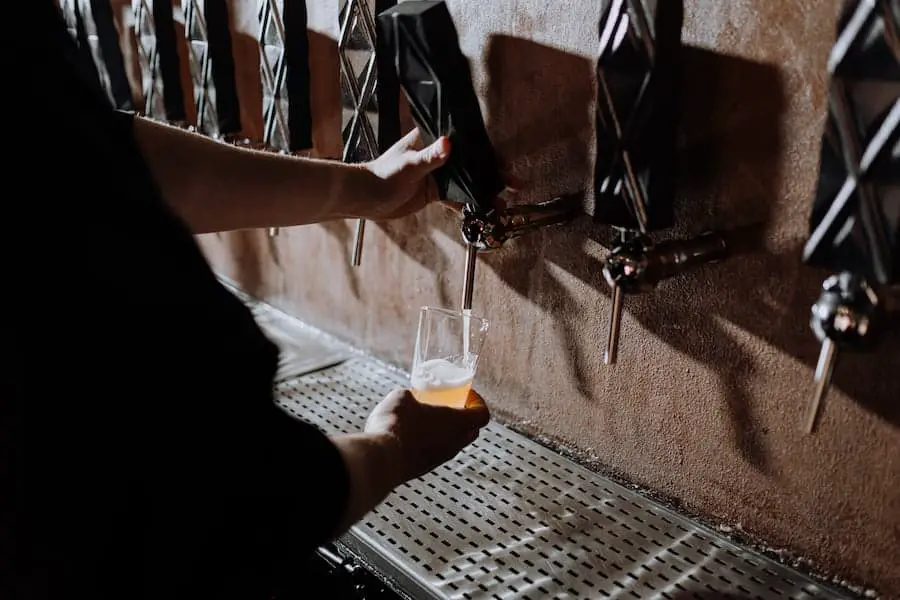
Preparation
You need to get the proper equipment required for brewing beer. This includes a siphon, a brew pot, a fermentation vessel, a wort cooler, an airlock, and a refractometer. You can choose to get an all-in-one kit that includes all of this equipment and the ingredients you need to brew your beer.
Once you have all of these, the next thing to do is to clean them thoroughly and sanitize them. You need to do this even if your equipment is brand new because even the tiniest amount of contamination can result in a ruined beer and no one wants that.
An average experienced brewer can take as little as 1 hour to complete the cleaning and sanitization process. As a beginner, it may take you as much as twice that time.
Brewing
The brewing process is where the bulk of the time you actively spend goes. The time it generally takes is dependent on your recipe and the equipment you are using. Each process in this phase consists of a specific task and a waiting time before the next step can be executed.
Steeping Grain
The steeping grain process is an optional process. You can choose to skip it and move on to the next. However, you should have in mind that steeped grain causes the aroma of the beer to be more intense.
In carrying out this process, you have to warm the water before soaking the grain for about 40 minutes. Put the grain in the warm water for about 45 minutes so that the enzymes in them can be released. You can then proceed to boil them.
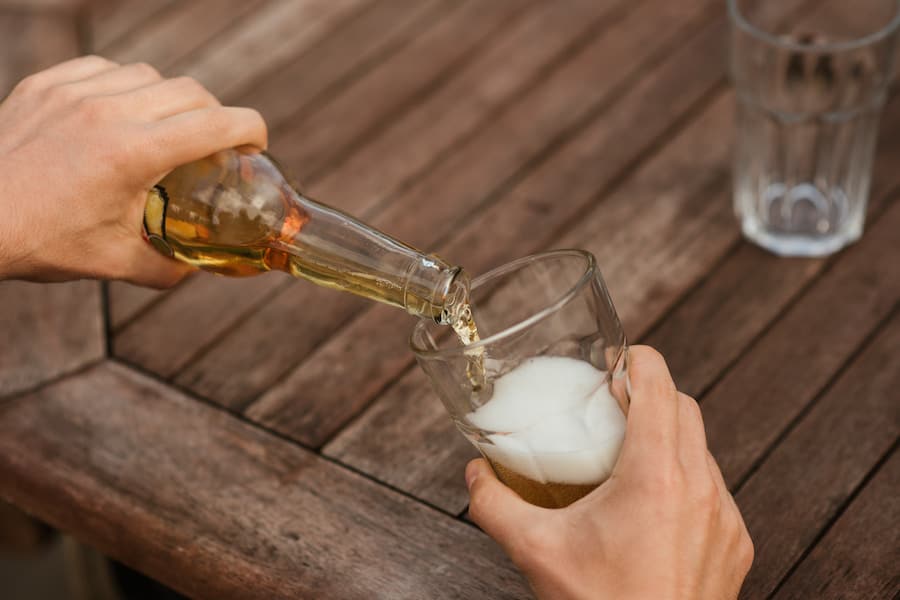
If you choose to skip this process, your brewing time will be extended by about one and a half hours.
Grain Boiling
This process is a very important part of the brewing phase because it determines the color of the beer and enhances the flavor. The time for this varies from recipe to recipe with the average time being around an hour for the light and low gravity beers and an extra half hour for Pilsner.
Most people boil their wort using a stable temperature while some others choose to fluctuate the temperature. This can result in the boiling time becoming as long as 4 hours.
Wort Cooling
Immediately you are done with boiling your wort, the temperature should be about 212 F (100 C) and it needs to cool to about 75 F (24 C). If you use a wort cooler, the cooling should take somewhere between 25 minutes to 30 minutes.
But if you do not have a wort cooler, this process could take hours.
Adding Yeast
Adding yeast is the last step you have to do till the beer is fully fermented. Transfer the liquid from the wort cooler or pot to a fermenter using a funnel. Have it in mind that yeast requires access to oxygen to carry out the process of fermentation.
You can use an aerator device to quickly aerate the wort. If you do not have one, you can stir the brew as you transfer the wort. The process of aerating and transferring the wort into a fermenter should take you about 30 minutes.
The fermentation process begins immediately and the duration will depend majorly on the temperature and strain of yeast you use.
Fermentation
The fermentation phase is a vital stage that has a direct impact on the quality of your beer. It is the final phase where the yeast uses up the sugar in the brew and converts them to alcohol. On average, this lasts about 2 weeks.
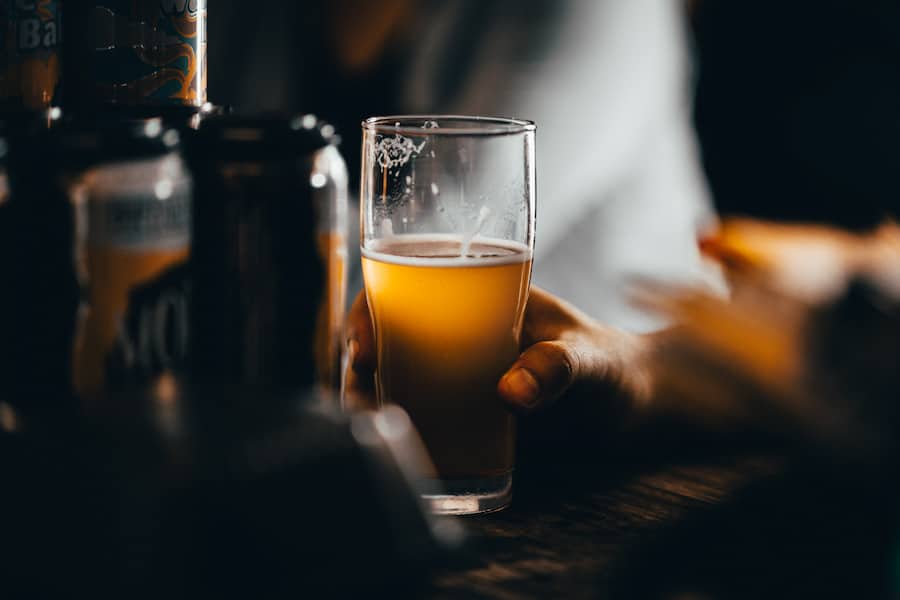
There is nothing much you can do at this stage aside from checking the brew gravity daily using a refractometer or hydrometer. You can tell that the fermentation process is completed when you get the same result for two consecutive days.
Lag Phase
The lag phase is the first stage of the fermentation stage. It commences immediately when you add the yeast and lasts about 3 to 15 hours. During this stage, the wort absorbs oxygen rapidly and the yeast grows.
Many people prefer using a higher temperature during this stage than the other stages. So the yeast grows at about 72 to 75 Fahrenheit compared to the other stages with a temperature of about 50 to 55 Fahrenheit.
Exponential Growth
Once the lag phase ends, the yeast begins to consume the sugar in the presence of oxygen. This conversion results in the production of alcohol and carbon dioxide.
The process starts with the conversion of simple sugars like glucose and fructose which lasts about 1 to 4 days and the conversion of complex sugars like maltotriose comes last.
During this stage, the signs of fermentation become visible. These include bubbles in the airlock and foam on the fermenter. The room will also be filled with the warm aroma of beer during this stage.
Yeast Growth
The conditioning fermentation stage lasts an average of 10 days. It can however be extended for as long as 2 months depending on the type of beer. During this stage, the yeast growth will begin to slow down and clot. Some excess hydrogen sulfide gas may also escape the fermenter.
Most people lower the temperature during this stage to about 35 to 40 F. At this point, the beer is almost done.
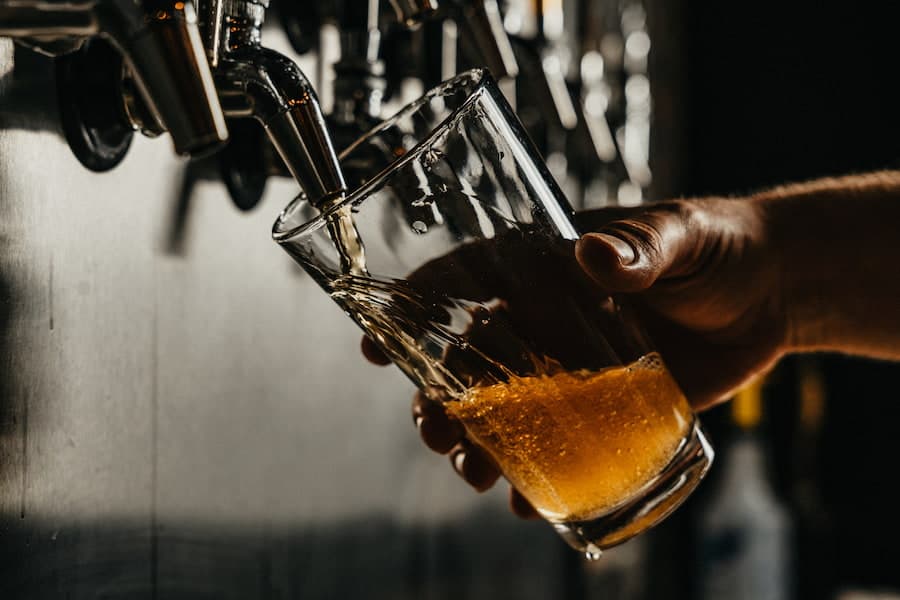
Bottling
The moment the fermentation phase is complete, your beer is ready to be stored. You can store your beer using either bottles or beer kegs. Have it in mind that the carbonation process that starts once you bottle the beer takes around 4 to 6 weeks.
If you are storing your beer in bottles, consider adding some priming sugar to your wort. However, if you are storing your beer in a keg, you do not have to add sugar because the kegerator will handle the carbonation. Store your beer in a cool and dark place until it is ready for consumption.
Ale vs Lagers
Ales and lagers are two types of beer that are entirely different because of how they are fermented. After 4 to 6 weeks of fermentation, you can open your light ale for drinking but you will have to wait longer, as long as 2 months to drink your lager.
This is, mostly, because of the fermentation time and temperature. Lagers generally ferment at a slower rate and much lower temperature as opposed to ales.
Here is a table of the time it takes different types of beer to ferment and condition:
| Type of Ale | Time It Takes To Ferment and Condition |
| Light Ale | 2 to 3 weeks for fermentation, 4 weeks for bottle conditioning |
| Amber Ale | 3 to 4 weeks for fermentation, 4 weeks for bottle conditioning |
| Dark Ale | 4 to 6 weeks for fermentation, 8 weeks for bottle conditioning |
| Light Lager | At least 3 months for fermentation, bottle conditioning to taste |
| Amber Lager | 6 months for fermentation, 3 to 4 months for bottling |
| Dark Lager | At least 10 months for fermentation |
Related Questions
Can You Ferment Beer in 3 Days?
If you are making any type of beer with light gravity, yes, you can ferment your beer in 3 days. Most of the active and vigorous fermentation takes place within that time. You will still have to let the beer condition for a couple of weeks to improve the taste.
What Makes Beer More Alcoholic?
Most people are quick to assume more yeast means more alcohol. This is wrong because yeast only converts sugar to alcohol. So, to make beer more alcoholic, just add more sugar during fermentation. In essence, more sugar implies more alcohol content and vice versa.
What Are Common Faults in the Beer Making Process?
Some of the most common faults in the beer-making process could be avoided with proper monitoring. They include ingredient variation, bacterial spillage, improper carbonation level, and haze. Of all these, bacterial spoilage is regarded as the most dreaded particularly for non-pasteurizing breweries.
Conclusion
Making a good beer takes time. The preparation and brewing will take you a lot of hours depending on the recipe you follow and the equipment you use. However, that time is nothing compared to the fermentation process.
